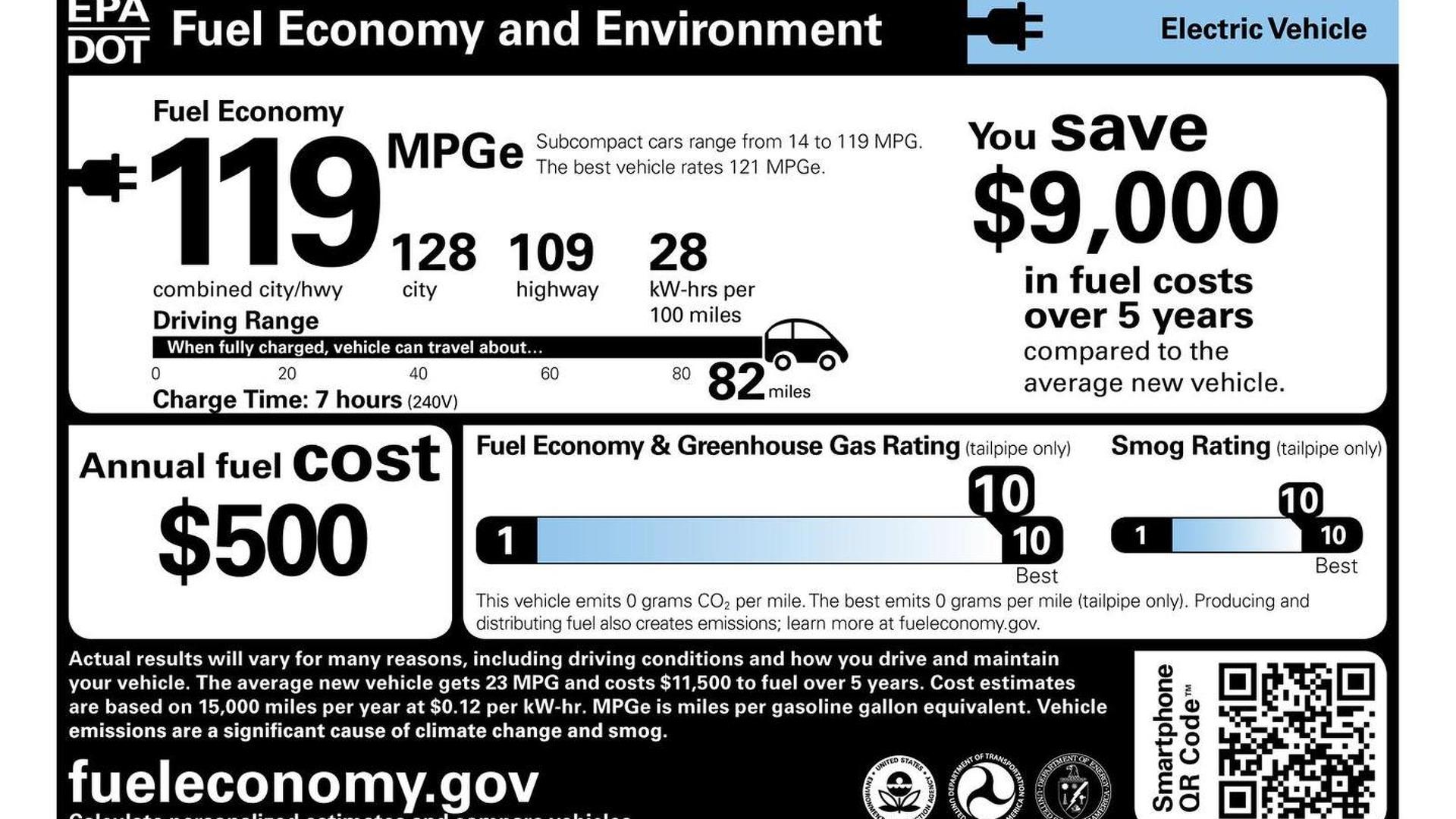
Just like conventionally powered models, all new electric cars sold in the U.S. are required by federal law to have a sticker affixed to a side window that provides the manufacturer’s suggested retail price (MSRP) and other pertinent details.
In the auto industry this is known as a “Monroney” sticker. It’s named for Sen. Almer Stillwell “Mike” Monroney, who was chief sponsor of the Automobile Information Disclosure Act of 1958 that mandated use of the document that bears his name.
If you’re buying a new EV, it’s prudent to keep a copy of the Monroney sticker in your files for future reference. It can, for example, document for a future buyer the accessories that originally came with the vehicle. If you already own an EV but didn’t hold onto the sticker, or you’re not the original owner, the website MonroneyLabels.com allows you to obtain a reproduction of the original by entering the car’s vehicle identification number (VIN).
At the top of every Monroney sticker, you’ll find basic data that includes the vehicle's year, make, model, and applicable trim level, the interior and exterior color treatments, and its VIN.
Usually at the left of the sticker will be a box that contains a list of the vehicle’s standard features for that particular trim level. You’ll find information up front on its electric motor, battery, charging system, and so forth. Also listed are details on the model's technical features, audio system, safety systems, climate control, seating, lighting, power accessories, and wheels and tires.
Usually, though not always, this part of the sticker will also contain details regarding the manufacturer’s warranty. This is typically broken down into comprehensive (“bumper-to-bumper”) coverage, as well as for the powertrain, corrosion (rust), and, where included, complimentary maintenance and roadside assistance programs. Coverage is expressed in years/thousands of miles. Federal regulations require automakers cover an EV’s battery pack under warranty for at least 8 years or 100,000 miles, whichever comes first.
You’ll also note a second list that details the vehicle’s base price, along with the cost of all factory options and/or packages. (If the car comes with any dealer-installed accessories, those will be noted on a separate sticker.) At the end of this list you’ll find the model’s base price, the manufacturer’s mandatory delivery charge, and the vehicle’s bottom-line MSRP.
A prominent box required on every Monroney sticker provides information on a vehicle’s energy consumption. In the case of EVs, this section displays its official “MPGe” ratings for city, highway, and combined city/highway driving. This is a miles-per-gallon equivalent created by the Environmental Protection Agency (EPA) as a comparison tool for consumers. It’s calculated based on a conversion factor of 33.705 kilowatt-hours of electricity equaling one theoretical gallon of gasoline.
The sticker also shows the number of kilowatt-hours of electricity that’s needed to operate the auto for 100 miles, and it’s expressed as kWh/100 mi. The EPA says this measurement is a more accurate way to gauge an EV’s energy consumption than the MPGe rating. You’ll also find data on how it compares to other similar vehicles in this regard. This box also gives the projected annual cost to run the EV, based on 15,000 miles driven at a predetermined average cost for electricity. Also noted is an estimate of how much less you’ll spend on energy over a five-year period than someone who owns a gas-powered car that’s rated at a combined 27 mpg.
Importantly, this section of the label also notes the average number miles the vehicle can operate on a charge, and how long it takes to fully replenish a discharged battery using a 240-volt (Level 2) charger.
And that’s not all. This part of the sticker further includes ratings for the vehicle’s smog-related tailpipe emissions and greenhouse-gas emissions, expressed on a 1-10 basis. Since full electric vehicles generate neither of these pollutants they automatically receive a rating of 10.
You’ll also find a “QR” code that can be scanned by a smartphone and takes users to a website where they can enter information about their commutes and driving habits to get a better estimate of their energy consumption and costs.
All Monroney labels are required to include a box that notes the vehicle’s safety ratings, based on crash tests conducted by the National Highway Traffic Safety Administration (NHTSA). In addition to the overall score, there are separate marks for how well the car protects the driver and front passenger in a frontal collision, and for front and rear-seat riders in a side-impact crash. Also noted is the risk of a rollover in a single vehicle crash. The ratings are given on a five-star basis, with more stars indicating better occupant protection.
Be aware, however, that frontal-impact results are useful only when comparing models within a specific size and weight class. All else being equal, occupants in larger and heavier vehicles will fare better in a crash than will those riding in smaller and lighter ones. Side-impact and rollover ratings, however, can be compared across all model types and sizes due to the manner in which vehicles are tested.
Unfortunately, NHTSA tends not to crash-test low-volume models, which includes most EVs. As of this writing, only the Chevrolet Bolt EV, Nissan Leaf, and all three Tesla models have been rated for safety by NHTSA, and include the ratings on their Monroney labels.
A final section of the sticker lists the vehicle’s country of origin and where it was assembled. This section also notes the percentage of domestic (U.S. and Canada) and imported parts that went into the car or truck on the sticker. It also notes from which countries the motor, transmission, and sometimes the battery are sourced. Note that these figures do not include final assembly, distribution, or other non-parts costs. The label also documents the name and location of the dealership to which the vehicle was delivered.
ABOUT THIS ARTICLE:
Change Your Location
Weekly graph